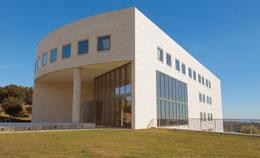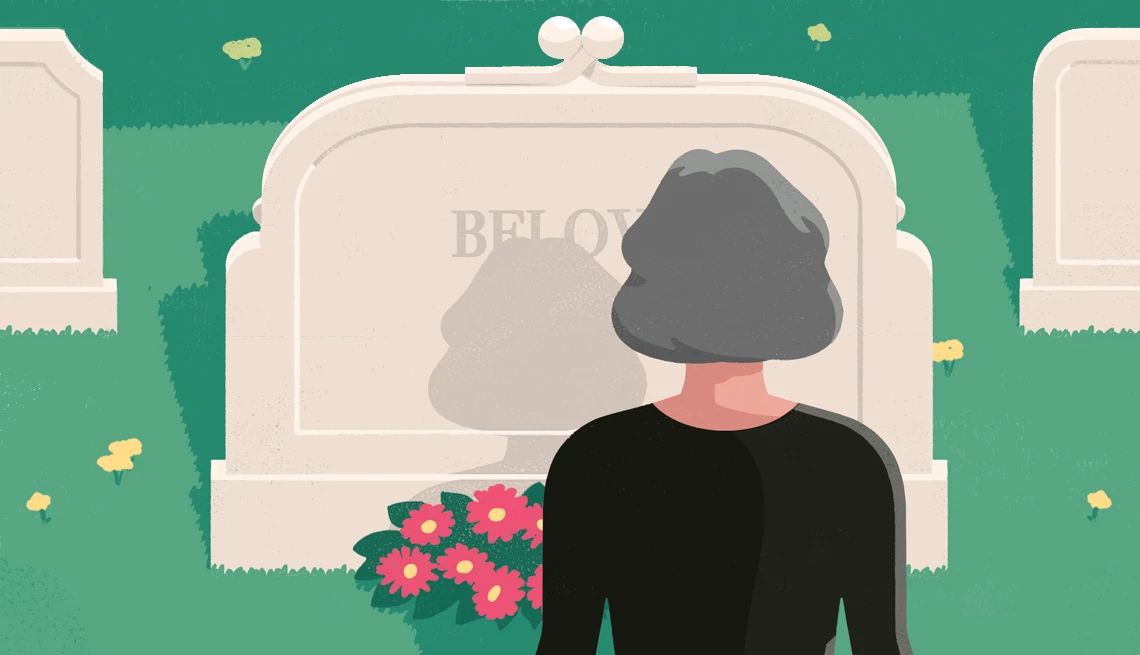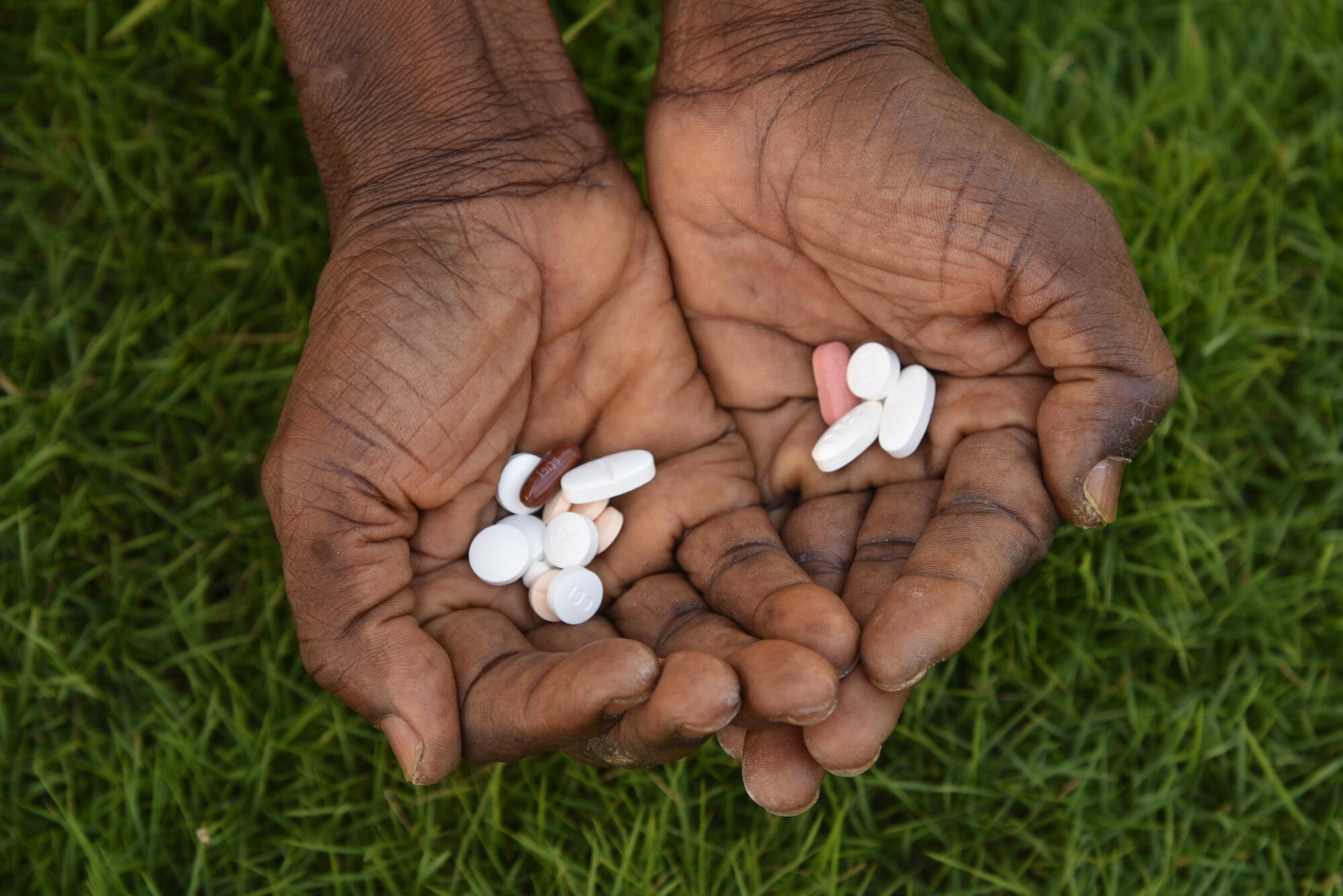
- Select a language for the TTS:
- UK English Female
- UK English Male
- US English Female
- US English Male
- Australian Female
- Australian Male
- Language selected: (auto detect) - EN
Play all audios:
Are ageing and disease two sides of the same coin? Erika Check Hayden reports from an institute that is betting that they are. You have full access to this article via your institution.
Download PDF The Buck Institute for Age Research. Credit: R. VENTE ?Don't forget,? Robert Hughes reminds a colleague in the hallway, ?beer on the landing later to celebrate my impending
death.? Hughes isn't ill, but rather kicking off festivities for his 45th birthday. And working at the Buck Institute in Novato, California, an independent institute devoted to ageing
research, tends to alter the way one thinks about birthdays. Their work makes the Buck's 15 principal investigators peculiarly, if playfully, aware that they are adults getting older.
But their institute is on the other side of the ageing divide. ?It is a toddler becoming a juvenile,? says Dale Bredesen, the Buck's director. Youth, like age, has its problems, and
after a rough infancy, the Buck has emerged as a player with the potential to change the way people think about ageing. The Buck was founded on the premise that ageing and disease are
manifestations of the same biological processes, and they can be understood only by working across disciplines. It is a modern take, but it has its supporters, including the US National
Institutes of Health (NIH). In 2005, the agency named the Buck as one of five national Nathan Shock Centers of Excellence in the Basic Biology of Aging. And in September, it gave the
institute US$25 million to create a new 'interdiscipline' called geroscience: defined as the study of connections between ageing and age-related disease. We don't need a
National Cancer Institute and a National Institute on Aging in separate buildings. Gordon Lithgow Now, the Buck is embarking on a growth spurt that will add 10 labs in 3?4 years. Plans have
been drawn up for a long-term goal of three new buildings on its sunny hilltop campus and 20 more investigators, bringing the total number of labs to 45. But the expansion will depend on
funding, which, despite recent votes of confidence from the NIH, may be hard won. Peers in research on ageing see the Buck as a pioneer, testing the links between ageing and disease.
?It's clearly an experiment worth doing,? says molecular biologist Stephen Helfand of Brown University in Providence, Rhode Island. But research into ageing has historically faced
scepticism. ?We're all watching to see whether it is working,? says Helfand. ?Are they going to do something good and bold, or are they going to be doing the same old boring things
we're doing?? To understand the novelty of the Buck's approach, historical perspective helps. In the 1950s, ageing was thought to be intractable. The rather crude tools available
to those who studied it didn't engender respect. Caloric restriction was known to extend lifespan in some organisms but was enigmatic. There weren't a lot of ways to study ageing
beyond simple observation. ?People were essentially grinding up old and young rats? and coming up with descriptions rather than learning about mechanics, says Judith Campisi, a cellular and
molecular biologist who splits her time between the Buck and the Lawrence Berkeley National Laboratory. Around 1961, researchers established that ageing was a bona fide biological process,
separate from, and as important as, the pathologies associated with it. By 1974, the NIH had set up a specific branch ? the National Institute on Aging ? signalling that the field had earned
a place in mainstream biomedical research. But soon after, the advent of genetic engineering and modern molecular biology upended the tidy distinctions between ageing and disease. A new
generation of researchers embraced molecular biology. In the 1990s, they discovered that knocking out certain genes endowed organisms such as yeast, worms and flies with unusually long
lifespans1. But oddly enough, researchers started to find that mutating these genes to slow ageing could also stave off ailments such as cancer and diabetes2, which claim many more old
people than young but that aren't usually seen as related to the ageing process itself. These studies raised the question: could ageing and disease be part of the same process after
all? Some researchers have reverted to the earlier course, says the Buck's Gordon Lithgow. ?We're coming around in a circle and saying, it's the same thing. We don't need
a National Cancer Institute and a National Institute on Aging in separate buildings with separate funding streams, for example,? says Lithgow. ?If ageing is the biggest causal factor for
adult cancer, they should be together.? Mutations in any of dozens of genes can extend the lifespan of the nematode worm _C. elegans_ up to sixfold. Credit: S. ALVAREZ & G. LITHGOW And
thanks to a trust fund left by Beryl Buck, a nurse who died in 1975, the institute can pursue this integrated approach. Buck left behind a trust to benefit the citizens of Marin County, a
wealthy enclave of towns, including Novato, just across the Golden Gate Bridge from San Francisco. The fund was to be used, in part, ?to extend help towards the problems of the aged?. The
trust's funds ballooned from $11 million to several hundred million dollars after its core stock holdings shot up in value. And dispensation of the funds fell into a messy legal battle
between San Francisco and Marin County. But even before this brawl resolved in Marin County's favour in 1986, a board of advisers convened by the Buck Trust met to figure out how to
meet Beryl Buck's goal of aiding Marin County's aged and needy. ?The joke was that the trust was for the poor, elderly people of Marin ? both of them,? recalls Jack Rowe, who was
studying ageing at Harvard Medical School in Boston, Massachusetts, at the time, and led the board of advisers. The group settled on the idea of an independent research institute focused on
gerontology, and modelled on places such as the Salk Institute for Biological Studies in San Diego. A DESIGN FOR LIFE The advisers set about duplicating two Salk characteristics: its
enviable location and remarkable architecture (see page 592). The trust bought a 200-hectare tract of land atop scenic Mount Burdell, an undeveloped hilltop dotted with oak trees and
boasting views of both the Pacific Ocean and the San Francisco Bay. The board commissioned renowned architect I. M. Pei to design the institute's $59-million headquarters. And despite
Marin County residents' objections to the development, construction started in 1996. To recruit a director, the advisers once again looked down the California coast ? this time to La
Jolla, where Bredesen, then a neuroscientist and neurologist, was working at yet another private institute, the Burnham. I'm totally uninterested in the fountain of youth. Robert Hughes
Bredesen agreed to accept the job, on one condition: the Buck would have to revise its mission. ?They wanted to set up an institute related to neurology and neurological disease, and I
said, 'That's not right. That's not where we are in ageing today,'? Bredesen says. ?It was clear that we needed to think about ageing and its relation to disease.?
Bredesen envisaged a self-sufficient, interdisciplinary research institute built on three cores: the biology of ageing, the study of disease and the development of technology. The idea that
growing old and growing ill are two sides of the same coin remains controversial. Backers of the concept include David Sinclair of Harvard Medical School who made headlines with findings
that a chemical in red wine called resveratrol extends lifespan and might prevent diabetes-like symptoms in mice3 (see also page 712). ?I don't see ageing as a disease, but as a
collection of quite predictable diseases caused by the deterioration of the body,? Sinclair says. But others don't see it that way. The University of Michigan's Richard Miller says
that Sinclair's characterization is ?missing the point in a subtle but important way?. Ageing is a major cause of many diseases, but not the only one, Miller argues. And, he adds,
ageing has some effects that aren't considered disease states. ?It's important to make a distinction between ageing and disease,? Miller says. Still, those who differ agree that
interfering with the ageing process could help patients who are suffering from age-related disease. Sinclair is already running a clinical trial using resveratrol to prevent diabetes in
humans. Ageing researchers' shift towards treating disease, rather than attempting to lengthen lifespan, has legitimized the field ? and attracted scientists who would have eschewed
ageing research in the past. Research on ageing has always been dogged by a flake factor ? the suspicion that scientists pursuing the fountain of youth were merely involved in a self-serving
and impossible quest. Today, researchers studying ageing have largely distanced themselves from that perception. Hughes, for instance, studies protein?protein interactions and uses
drug-screening technologies to look for potential therapies for protein-misfolding conditions, such as Huntington's disease. ?I'm totally uninterested in the fountain of youth,?
Hughes says. ?What's interesting to me is the idea that pharmaceutical drugs that extend lifespan will be an interesting new class of drugs to treat disease.? RISKY BUSINESS To Hughes
and his colleagues at the Buck, the new geroscience grant offers a means to turn that idea into reality. ?The essential thing that will come from this grant is speed,? says Lithgow. The
geroscience grant enables risky work that, by and large, will fail. But in a few cases, it might succeed, leapfrogging years of painstaking studies and hitting pay dirt much faster. Lithgow
and Campisi are going after checkpoint genes, cellular traffic cops that survey for damage and prevent faulty cells from dividing. These have long been a target in cancer research because
the products of such genes prevent cancer. Last year, Lithgow's lab reported that deactivating checkpoint genes in the nematode worm _Caenorhabditis elegans_ extended its adult
lifespan4. Deactivating such genes in mammals results in an early death as cells that can divide become cancerous, but practically no _C. elegans_ cells divide. To Campisi and Lithgow, the
finding suggests that losing certain checkpoint genes in non-dividing cells could preserve the cells' health. They think that this concept could extend to, for example, the brain cells
of human stroke patients, as adult human neurons don't divide either. Pioneering spirit: (from left) Gordon Lithgow, Judith Campisi and Robert Hughes of the Buck Institute for Age
Research are pursuing new models of ageing. Credit: R, VENTE Normally, it would take years of work even to begin to address such a question ? further studies in worms, then bridging studies
in other model organisms. Finally, perhaps, someone would fund an extension into human cells. But Campisi and Lithgow vaulted over these hurdles and set up a three-way collaboration with
their Buck Institute colleague, Xianmin Zeng, who specializes in human embryonic stem-cell research. Zeng will grow human neurons from stem cells, and Lithgow and Campisi will study
cell-division proteins in the resulting neuronal tissue. Such a leap would probably be panned as too speculative by review committees that mete out NIH funding. ?It would be difficult to get
grants like these reviewed in the traditional way,? Lithgow says. The geroscience grant is a boon for the Buck's brand of high-risk research. But it does not guarantee success. The
Buck is up against a few obstacles ? for example, it must adhere to numerous building restrictions, limiting the potential for expansion. And although its location is idyllic, Marin County
is isolated; the nearest universities, Berkeley and the University of California, San Francisco, are both 50 kilometres away. I don't see ageing as a disease, but as a collection of
predictable diseases caused by the deterioration of the body. David Sinclair ?Their slight weakness is that the Buck is a standalone institute not connected to other universities or
hospitals,? says Leonard Guarente, who studies ageing at the Massachusetts Institute of Technology, Cambridge, and serves on the Buck's board, ?but their strength is they have very good
scientists and they do good work.? But good funding doesn't necessarily follow good work. And although certain types of ageing research have captured the popular imagination, that
hasn't translated into bountiful support for basic studies such as those that go on at the Buck. The Buck draws $6 million a year from the Buck Trust, and the $25-million geroscience
grant will be spread over five years. With a $30-million annual operating budget and a big expansion planned, that leaves a gap of more than $20 million a year to fill through other grants
and private funding. PUBLIC PROFILE But money is flowing to the multibillion-dollar industry of anti-ageing products, many of which are of a dubious nature. And controversial personalities,
such as former computer scientist Aubrey de Grey, are attracting public interest and dollars with sexier goals than that of the Buck's. De Grey is convinced that all ageing is caused by
cellular damage; fix that damage and humans can live for ever. This tantalizing idea has convinced private citizens to donate more than $4.5 million to support his Methuselah Mouse Prize,
an incentive for researchers looking to extend mouse lifespan. But mainstream researchers are split on whether his simplification of the ageing process ? and his ability to draw large
donations, such as a $3.5-million gift in 2006 from American entrepreneur Peter Theil ? is helping or hurting their cause. An invited talk by De Grey at the Buck, for instance, divided
faculty members between those who label his work 'pseudoscience' and want the institute to distance itself from him, and those who are glad to see the public interested. ?Aubrey
has his weak points, and he grandstands, and that turns people off,? says Campisi. ?But I think the fact that he has stimulated a wealthy donor to give money to basic research on ageing is a
good thing for all of us.? Still, donors seem more excited by the hunt for a fountain of youth than they are about working out the details of normal ageing. ?When I say I study ageing,
people say, 'You must be rich.' But people aren't rallying to try to understand ageing. They're rallying to cure their son of diabetes,? says Helfand. ?The disease people
get the money.? The National Institute on Aging's $1-billion budget this year is smaller than that of the major disease-specific branches of the NIH, including those that fund cancer,
cardiovascular and brain research. And NIH budgets overall are stagnant ? a trend that has hit independent institutes such as the Buck perhaps harder than universities and medical centres,
which can count on alumni and patients. But the Buck's vision is to change that picture. If geroscience works, it will produce drugs that may one day cure or prevent afflictions such as
cancer and Alzheimer's disease. And that will benefit regular people ? maybe even people such as Hughes, who, upon celebrating his 45th birthday, estimates that he is halfway through
his own lifespan. ?I don't think the point of what I'm doing here is to live to 120, but to live for as long as I'm going to live and be healthy, and to help the field think
more clearly about real things affecting real people in real time,? Hughes says. REFERENCES * Kenyon, C. _Cell_ 120, 449?460 (2005). Article Google Scholar * Pinkston, J. M., Garigan, D.,
Hansen, M., Kenyon, C. _Science_ 313, 971?975 (2006). Article Google Scholar * Baur, J. et al. _Nature_ 444, 337?342. * Olsen, A., Vantipalli, M. C., Lithgow, G. J. _Science_ 312,
1381?1385 (2006). PubMed Central Google Scholar Download references Authors * Erika Check Hayden View author publications You can also search for this author inPubMed Google Scholar
ADDITIONAL INFORMATION Erika Check Hayden writes for _Nature_ from San Francisco. RELATED LINKS RELATED LINKS RELATED EXTERNAL LINKS Buck Institute for Age Research National Institute on
Aging Methuselah Mouse Foundation RIGHTS AND PERMISSIONS Reprints and permissions ABOUT THIS ARTICLE CITE THIS ARTICLE Hayden, E. Age research: A new angle on 'old'. _Nature_ 450,
603–605 (2007). https://doi.org/10.1038/450603a Download citation * Published: 28 November 2007 * Issue Date: 29 November 2007 * DOI: https://doi.org/10.1038/450603a SHARE THIS ARTICLE
Anyone you share the following link with will be able to read this content: Get shareable link Sorry, a shareable link is not currently available for this article. Copy to clipboard Provided
by the Springer Nature SharedIt content-sharing initiative

:max_bytes(150000):strip_icc():focal(216x0:218x2)/benedict-cumberbatch-1-435-4-20cc736017b24435a3498a49d7c22b0e.jpg)





